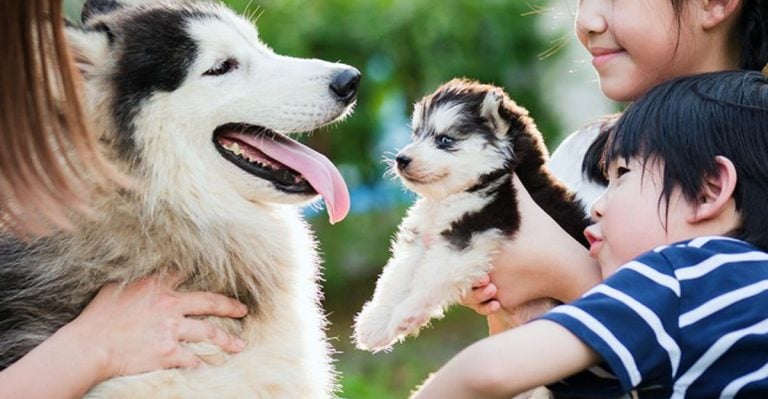Swap Out 15 Outdated Dog Commands With Smarter Alternatives

Many popular dog commands do more harm than good. They confuse your dog, delay progress, or don’t match how dogs naturally think. If you’re using outdated cues, you’re not alone. Fortunately, there are more effective alternatives that improve clarity for both you and your dog. Let’s discuss them.
“No” Means Nothing

Saying “no” tells your dog something went wrong, but it never explains what to do instead. The word gets tossed around so much that it loses value. Teaching a redirection cue like “leave it” or “go to mat” gives them a next step they can actually follow.
“Stay” When Sit Might Already Imply It

“In many training methods, “sit” already implies holding position, so adding “stay” can be redundant. Instead, use a release cue like “okay” or “free” to signal when they are allowed to move. Traditional styles may separate the two, but modern training favors clarity.
“Heel” In The Age Of Sidewalks

When your dog feels relaxed, they learn better. Harsh structure like “heel” can trigger tension, stifling engagement. But saying “let’s go” invites curiosity and connection. Your dog walks beside you by choice, not command—fueling emotional safety and trust with every step.
“Off” Leaves Dogs Hanging

“Off” is a reactive cue lacking directional value. Dogs respond better to forward-focused commands. Teaching “go to bed” or “place” creates spatial associations and promotes calmer behavior. Neuroscience supports clarity-driven learning, so goal-oriented cues enhance retention and emotional stability.
“Roll Over” Takes Up Time

Few dogs need to roll unless they’re auditioning for TV. Teaching “roll over” is slow and often stressful for nervous dogs. Time spent learning it could instead go toward “touch,” which does not only build focus, but also strengthens your connection fast with the dog.
“Speak” Can Fuel Bad Habits

Encouraging barking makes sense in movies but not in real life. Once barking becomes a trick, it’s harder to tell when it’s just performance or genuine alert. Use “quiet” as the go-to instead, which helps control vocal outbursts in both home and public settings.
“Down” Gets Misused Constantly

Sometimes it means lie down. Other times it means stop jumping. That mixed use confuses your dog. Choose “off” for jumping issues and reserve “down” only for laying flat. Clear words paired with clear meanings keep behavior consistent and frustration low.
“Drop It” Gets Emotional

Shouting “drop it” in panic often makes your dog clamp down harder. A better approach is teaching a trade. Say “give” while offering a treat, then praise heavily. Over time, they learn letting go brings rewards—not punishment or chaos.
“Fetch” Often Backfires

Many dogs run, grab the toy, then play keep-away. That’s because fetch only works if the return part is strong. Instead of yelling “fetch” repeatedly, teach “bring” and “release” as their own steps. That way, play turns into partnership, not frustration.
“Bang!” Doesn’t Teach Stillness

Acting out a dramatic fall isn’t useful beyond a novelty. Teaching “settle” creates actual rest. It anchors your dog to a specific spot, usually a bed or blanket. This builds a link between that space and emotional calm, even when the room is buzzing.
“Go Potty” Isn’t Specific Enough

“Go potty” isn’t clear enough. Dogs don’t automatically know if that means urinate, defecate, or sniff the bushes. Use separate commands like “go pee” and “go poop” to communicate exactly what you expect. It improves training results and shortens walk time.
“Come” Gets Wrecked Quickly

Over time, “come” becomes a trap if it always ends the fun. Switch to “here” or “close.” This makes arrival a party for your dog—not a punishment and encourages them to approach eagerly instead of hanging back with suspicion or delay.
“No Jump” Feeds The Behavior

Saying “no jump” still draws attention to jumping, which often rewards the behavior. Train “sit” instead and reward it before the paws leave the ground. By focusing on an action that’s incompatible with jumping, you shape greetings into calm encounters.
“Calm Down” Doesn’t Mean Anything

It’s what we say when we feel overwhelmed. But to your dog, “calm down” is just noise. Replace it with a taught cue like “place,” sending them to a blanket or mat. With practice, they’ll associate that space with peace—not chaos.
“Be Nice” Is Vague Talk

Telling a dog to “be nice” when greeting strangers or other animals doesn’t offer direction. Social behavior needs structure. Teach a controlled approach with “wait” and a release cue once it’s safe. That replaces anxiety with clear rules they can follow.






